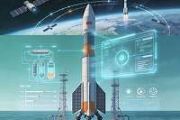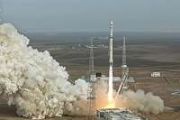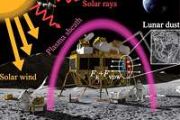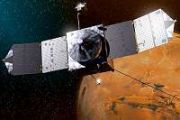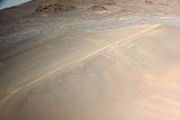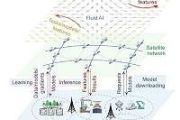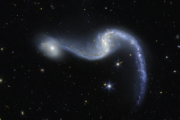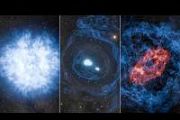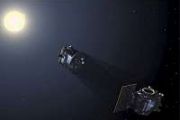
Copernical Team
Hera asteroid mission’s CubeSat passengers signal home

The two CubeSat passengers aboard ESA’s Hera mission for planetary defence have exchanged their first signals with Earth, confirming their nominal status. The pair were switched on to check out all their systems, marking the first operation of ESA CubeSats in deep space.
Paxi explores wind
 Video:
00:04:21
Video:
00:04:21
English Paxi explores wind
Learn about wind, what causes it and how and why we study it in the latest Paxi adventure
Spanish Paxi explora el viento
Aprende sobre el viento, qué lo provoca y cómo y por qué lo estudiamos en la última aventura de Paxi.
Romanian Paxi explorează vântul
Aflați despre vânt, ce îl provoacă și cum și de ce îl studiem în cea mai recentă aventură Paxi.
Portuguese Paxi explora o vento
Aprende sobre o vento, o que o provoca e como e porquê o estudamos na mais recente aventura Paxi.
Polish Paxi bada wiatr
Dowiedz się więcej o wietrze, jego przyczynach oraz o tym, jak i
Microbes thrive on iron in oxygen-free environments
 Pipelines, sprinklers, and other infrastructure in oxygen-free settings are at risk from Microbially Induced Corrosion (MIC). This process, caused by microorganisms, leads to the degradation of iron-based structures, posing significant risks of costly damages or even infrastructure collapse. MIC is a distinct type of corrosion that occurs in the absence of oxygen, unlike rust, which is driven by
Pipelines, sprinklers, and other infrastructure in oxygen-free settings are at risk from Microbially Induced Corrosion (MIC). This process, caused by microorganisms, leads to the degradation of iron-based structures, posing significant risks of costly damages or even infrastructure collapse. MIC is a distinct type of corrosion that occurs in the absence of oxygen, unlike rust, which is driven by GMV wins ESA contract for CyberCUBE space cybersecurity mission
 GMV has secured a contract from the European Space Agency (ESA) to lead the CyberCUBE mission, a key component of ESA's Cybersecurity Operations Centre (CSOC) Cyber Evolutions program. The mission, managed by a GMV-led consortium that includes GMV's Romania team as the prime contractor and GMV Spain, along with Alen Space, aims to strengthen the cybersecurity of space assets. The consortium will
GMV has secured a contract from the European Space Agency (ESA) to lead the CyberCUBE mission, a key component of ESA's Cybersecurity Operations Centre (CSOC) Cyber Evolutions program. The mission, managed by a GMV-led consortium that includes GMV's Romania team as the prime contractor and GMV Spain, along with Alen Space, aims to strengthen the cybersecurity of space assets. The consortium will Firefly Aerospace chosen as vendor for Space Development Agency HALO program
 Firefly Aerospace, a space transportation provider, has been selected as a vendor for the U.S. Department of Defense's Space Development Agency (SDA) Hybrid Acquisition for Proliferated LEO (HALO) program. This selection makes Firefly eligible to support end-to-end demonstration missions for SDA's military satellites, utilizing Firefly's Elytra orbital vehicles.
"Firefly is honored to supp
Firefly Aerospace, a space transportation provider, has been selected as a vendor for the U.S. Department of Defense's Space Development Agency (SDA) Hybrid Acquisition for Proliferated LEO (HALO) program. This selection makes Firefly eligible to support end-to-end demonstration missions for SDA's military satellites, utilizing Firefly's Elytra orbital vehicles.
"Firefly is honored to supp China claims to counter foreign espionage efforts using satellites
 China's Ministry of State Security (MSS) has announced that it has been taking steps to counter foreign intelligence agencies allegedly using satellites to gather sensitive information on the country. According to a recent post on the ministry's WeChat account, foreign organizations have employed high-resolution satellites to conduct remote sensing and espionage activities against China.
T
China's Ministry of State Security (MSS) has announced that it has been taking steps to counter foreign intelligence agencies allegedly using satellites to gather sensitive information on the country. According to a recent post on the ministry's WeChat account, foreign organizations have employed high-resolution satellites to conduct remote sensing and espionage activities against China.
T Space Systems Command releases Command Plan outlining organizational priorities
 Citing the growing criticality of effective, ready and reliable space capabilities in an era of Great Power Competition, Lt. Gen. Philip Garrant, Space Systems Command commander, has authored and released his command plan highlighting the organizational improvements necessary to pave the way forward for excellence.
Garrant, joined by U.S. Space Force Chief Master Sgt. Jacqueline Sauve, SSC
Citing the growing criticality of effective, ready and reliable space capabilities in an era of Great Power Competition, Lt. Gen. Philip Garrant, Space Systems Command commander, has authored and released his command plan highlighting the organizational improvements necessary to pave the way forward for excellence.
Garrant, joined by U.S. Space Force Chief Master Sgt. Jacqueline Sauve, SSC Astronauts return to Earth after seven months of research on ISS
 After spending seven months on the International Space Station (ISS), astronauts from NASA's eighth SpaceX crew rotation (Crew-8) successfully splashed down off Florida's coast. This mission, part of NASA's Commercial Crew Program, included NASA astronauts Matthew Dominick, Michael Barratt, and Jeanette Epps, alongside Roscosmos cosmonaut Alexander Grebenkin. The NASA crew conducted extensive re
After spending seven months on the International Space Station (ISS), astronauts from NASA's eighth SpaceX crew rotation (Crew-8) successfully splashed down off Florida's coast. This mission, part of NASA's Commercial Crew Program, included NASA astronauts Matthew Dominick, Michael Barratt, and Jeanette Epps, alongside Roscosmos cosmonaut Alexander Grebenkin. The NASA crew conducted extensive re Space Systems Command awards second plane of Epoch 1 satellites
 Space Systems Command (SSC) has secured a second set of six Epoch 1 satellites for the U.S. Space Force's missile warning and defense system in medium Earth orbit (MEO). This acquisition, worth $386 million, was awarded to Millennium Space Systems, Inc. through a firm fixed price other transaction agreement.
This contract completes the initial stage of the Epoch 1 program, which will deliv
Space Systems Command (SSC) has secured a second set of six Epoch 1 satellites for the U.S. Space Force's missile warning and defense system in medium Earth orbit (MEO). This acquisition, worth $386 million, was awarded to Millennium Space Systems, Inc. through a firm fixed price other transaction agreement.
This contract completes the initial stage of the Epoch 1 program, which will deliv Sidus Space completes CDR for Dutch laser comms satellite
 Sidus Space (NASDAQ: SIDU) has successfully passed the critical design review (CDR) for its LizzieSat NL, a laser communication satellite developed under a contract with The Netherlands Organization (TNO). This key achievement confirms the technical framework for the satellite's design and triggers a milestone payment as part of the multimillion-dollar agreement.
The completion of the CDR
Sidus Space (NASDAQ: SIDU) has successfully passed the critical design review (CDR) for its LizzieSat NL, a laser communication satellite developed under a contract with The Netherlands Organization (TNO). This key achievement confirms the technical framework for the satellite's design and triggers a milestone payment as part of the multimillion-dollar agreement.
The completion of the CDR 
